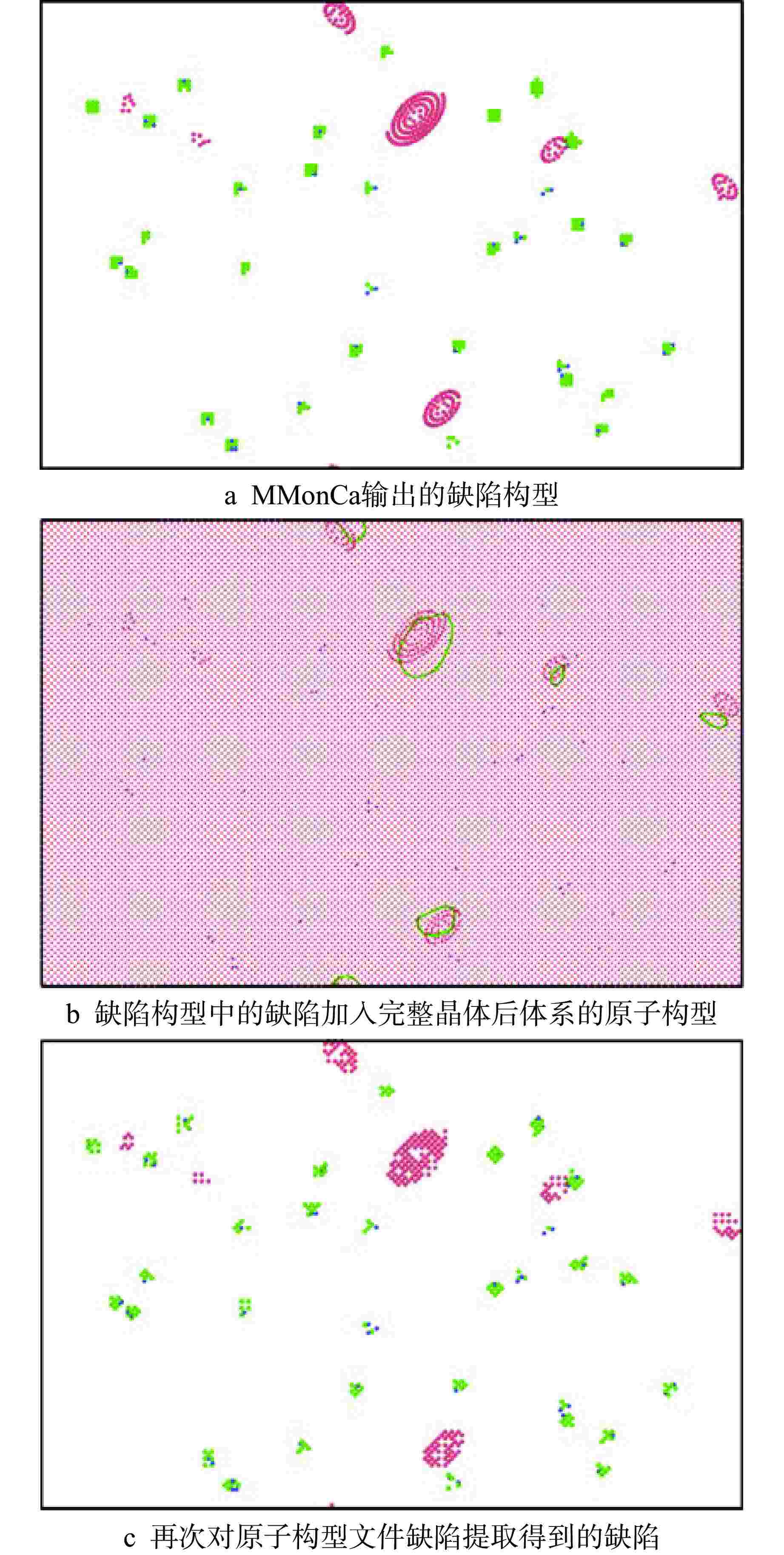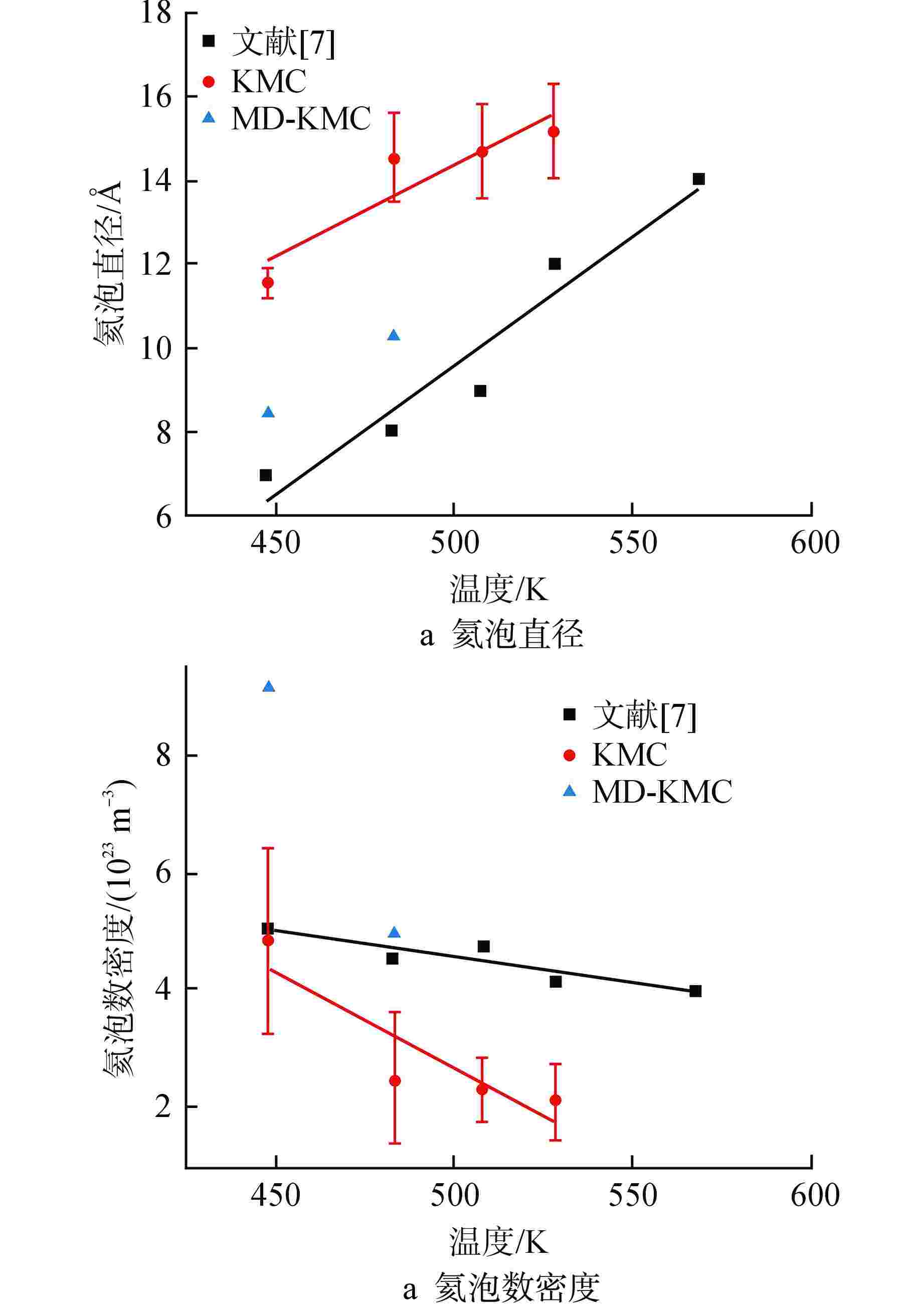Implementation and Application of a Coupling Method between Molecular Dynamics and Kinetic Monte Carlo for the Evolution of Helium Bubbles in Nuclear Structural Steel
-
摘要: 加速器驱动次临界堆、超高温气冷堆等第4代先进能源反应堆结构材料的研发,亟需借助数值模拟方法来缩短研发周期和提升研发效率。目前各种已有的数值模拟方法只适用于特定的时间和空间尺度,而先进能源反应堆用核结构材料高温辐照效应涉及从辐照微观结构演化到宏观力学性能多个时空尺度的过程。开发各个尺度模拟方法之间的耦合方法和程序,构建多尺度模拟计算平台,对于先进能源反应堆结构材料的快速研发、服役性能预测具有重要意义。本文基于原子构型与缺陷构型的相互转换,提出并实现了一种将微观尺度模拟方法(分子动力学)与介观尺度模拟方法动力学(蒙特卡洛)进行时间上耦合的模拟方法。通过该方法,可将辐照级联过程用分子动力学模拟,而缺陷的进一步演化用动力学蒙特卡洛方法(KMC),从而模拟核结构材料辐照剂量累计下微观结构演化的过程。通过使用该耦合方法模拟了核结构钢基体材料α铁中氦泡在中子辐照下的演化过程,并与实验数据对比,证明了该方法的可靠性。
-
关键词:
- 核结构钢 /
- 多尺度模拟 /
- 耦合方法 /
- 分子动力学 /
- 动力学蒙特卡洛方法(KMC)
Abstract: The research and development of structural materials for fourth-generation advanced reactors, such as accelerator-driven subcritical reactors and ultrahigh-temperature gas-cooled reactors, urgently requires the use of numerical simulation methods to shorten the research and development cycle and enhance the efficiency of research and development. Currently, various existing numerical simulation methods are only applicable to specific time and space scales, while the high-temperature irradiation effect of nuclear structural materials for advanced reactors involves multiple time and space scales from the irradiated microstructure evolution to the macroscopic mechanical properties. It is of great significance to develop coupling methods and codes between simulation methods at various scales, and to construct a multi-scale simulation and computation platform for the rapid research and development and service performance prediction of structural materials for advanced reactors. Based on the mutual conversion between atomic configuration and defect configuration, this paper proposes and implements a simulation method that temporally couples the microscale simulation method (molecular dynamics) with the mesoscale simulation method dynamics (Monte Carlo). By this method, the irradiation cascade process can be simulated by molecular dynamics, while the further evolution of defects is simulated by kinetic Monte Carlo, thus simulating the microstructural evolution of nuclear structural materials under the accumulation of irradiation dose. The reliability of this coupling method is demonstrated by using it to simulate the evolution of helium bubbles in the nuclear structural steel matrix material α-Fe under neutron irradiation and comparing it with experimental data. -
表 1 MMonCa中输出文件粒子类型的数字代号、符号含义及其对应的点缺陷
Table 1. Number Designation, Symbol and Corresponding Point Defect of Particle Types in MMonCa Output File
数字代号 9 30 36 39 93 132 139 181 220 符号 V I He HeV <111> HeCluster:V HeCluster:He ICluster:I VCluster:V 点缺陷 V I He He+V I V He I V -
[1] 李信东,任静霄,芦远方,等. 体心立方钨和铁中氦泡生长机制模拟研究进展[J]. 原子能科学技术,2021, 55(1): 50-61. doi: 10.7538/yzk.2020.youxian.0489 [2] GILBERT M R, ARAKAWA K, BERGSTROM Z, et al. Perspectives on multiscale modelling and experiments to accelerate materials development for fusion[J]. Journal of Nuclear Materials, 2021, 554: 153113. doi: 10.1016/j.jnucmat.2021.153113 [3] NORDLUND K, ZINKLE S J, SAND A E, et al. Primary radiation damage: a review of current understanding and models[J]. Journal of Nuclear Materials, 2018, 512: 450-479. doi: 10.1016/j.jnucmat.2018.10.027 [4] DUNN A, MUNTIFERING B, DINGREVILLE R, et al. Displacement rate and temperature equivalence in stochastic cluster dynamics simulations of irradiated pure α-Fe[J]. Journal of Nuclear Materials, 2016, 480: 129-137. doi: 10.1016/j.jnucmat.2016.08.018 [5] MORISHITA K, SUGANO R, WIRTH B D. Thermal stability of helium-vacancy clusters and bubble formation-multiscale modeling approach for fusion materials development[J]. Fusion Science and Technology, 2003, 44(2): 441-445. doi: 10.13182/FST03-A374 [6] XU H X, OSETSKY Y N, STOLLER R E. Cascade annealing simulations of bcc iron using object kinetic Monte Carlo[J]. Journal of Nuclear Materials, 2012, 423(1-3): 102-109. doi: 10.1016/j.jnucmat.2012.01.020 [7] JIA X, DAI Y, VICTORIA M. The impact of irradiation temperature on the microstructure of F82H martensitic/ferritic steel irradiated in a proton and neutron mixed spectrum[J]. Journal of Nuclear Materials, 2002, 305(1): 1-7. doi: 10.1016/S0022-3115(02)00916-9 -






 下载:
下载:





